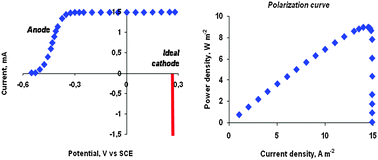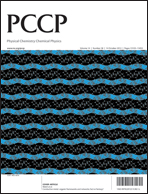Towards an engineering-oriented strategy for building microbial anodes for microbial fuel cells
Abstract
The objective of the work was to give some first insight into an engineering-oriented approach to MFC design by focusing on anode optimisation. The effect of various parameters was firstly investigated in half cell set-ups under well-controlled conditions. Microbial anodes were formed from soil leachate under polarisation at −0.2 V vs. SCE with different concentrations of substrate, salt and buffer. It was shown that non-turnover CV could be used to assess the electroactive maturity of the anodes during polarisation. This first phase resulted in the definition of a set of optimal parameter values. In the second phase, an optimal anode was formed in a half-cell under the defined optimal conditions. A numerical approach was then developed to calculate the theoretical maximum power that the anode could provide in an ideal MFC. The concept of “ideal MFC” introduced here allowed the theoretical maximum power to be calculated on the sole basis of the kinetic characteristics of the anode. Finally, a MFC designed in the aim of approaching such ideal conditions generated stable power densities of 6.0 W m−2, which were among the highest values reported so far. The discrepancy between the theoretical maximum (8.9 W m−2) and the experimental results pointed out some limit due to the source of inoculum and suggested possible paths to improvement.


 Please wait while we load your content...
Please wait while we load your content...